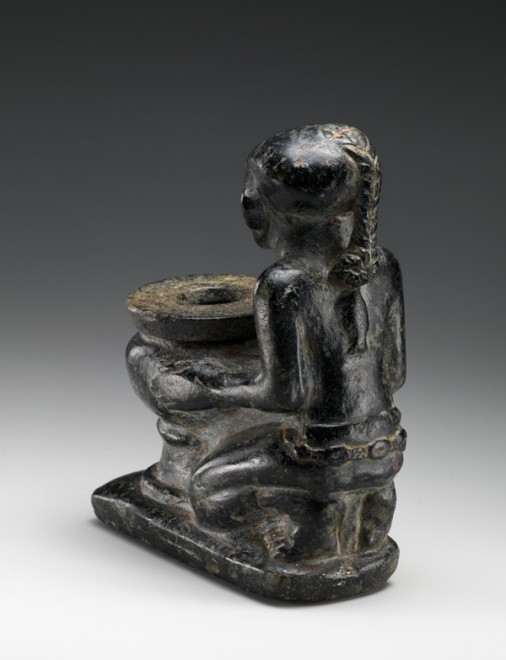This post originally appeared on The Metropolitan Museum of Art’s blog Now at the Met
Who can resist a piece of exquisite jewellery thought to bear magical properties?

This wonderful fish pendant on loan from the National Museums Scotland is on view through January 24, 2016, in the exhibition Ancient Egypt Transformed: The Middle Kingdom. Exemplifying the high craftsmanship of jewellery makers during the Middle Kingdom (ca. 2030–1650 B.C.), this pendant also embodies the magic that was part of life for the ancient Egyptians, which they incorporated into a wide variety of objects.
A loop for suspension extends from the mouth of the fish, which would have hung vertically. Despite the fact that it is only one and a half inches (four centimetres) in length, the pendant features amazing details—including the pores that create the so-called lateral line along its sides, the sharp ray on the dorsal fin, the mottling on the head, the comb of small spines on each side between the eye and the triangular gill cover, and the “whiskers” (barbels) that extend from its mouth. The naturalistic depiction of the fish identifies it as a Synodontis batensoda, also known as the “upside-down catfish.”
This type of catfish often swims upside down and very close to the surface. Modern scholars know that ancient Egyptians observed this fish’s unusual behavior because of various depictions, as in the Middle Kingdom tomb relief from Lisht below.
A fish pendant features famously in an ancient Egyptian tale that is part of what we now call the Westcar Papyrus. The story describes how young, beautiful women, wearing only “nets”, were rowing a king across a lake when one woman’s turquoise fish pendant fell from her braid into the water. She stops rowing, thus disrupting the boat party. Though the king offers her a replacement, the woman refuses; she wants her own pendant returned. The story ends happily when a magician recovers the lost pendant by moving half of the water in the lake onto the other half!
Depictions also tell us that fish pendants were worn as vertical hair ornaments. A lovely example in the exhibition is a cosmetic container from the British Museum, which is displayed next to the gold fish pendant. It features a kneeling girl with a long braid from which a fish pendant dangles down her back—in this case a different species, probably a tilapia. The girl also wears a girdle with cowrie shells, which are linked to fertility; silver cowries that may have come from such a girdle were also found with the gold fish pendant.

Fish pendants were likewise much more than mere ornaments. They were thought to be imbued with amuletic properties, which is possibly why the young woman from the boat party was so keen to retrieve her own. Usually fish pendants depict either the upside-down catfish or the tilapia. As keen observers of animals, the ancient Egyptians often connected a particular behaviour to special powers, and both species can be associated with regeneration. The Synodontis batensoda‘s peculiar position in the water bears some resemblance to a dead fish floating belly-up on the surface, but on the other hand it was clearly alive. Tilapias, connected to the goddess Hathor, were a symbol for fertility and regeneration since they carry their eggs in their mouths until they hatch.
